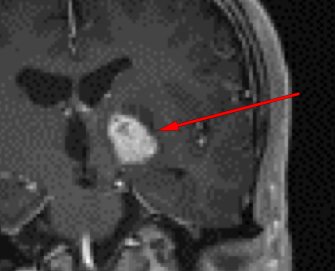Right & Left Thalamic Lesions Symptoms, Causes, Treatment
The thalamus is a critical component of many brain processes, including memory, mood regulation, the sleep-wake cycle, executive functions, moderating general cortical alerting responses, processing sensory information (such as taste, tactile, visual, and auditory information), and conveying it to the cortex, and sensorimotor control.
The thalamus may be engaged in verbal memory and semantic processes that support linguistic integration as well as the activation of cortical language areas. Aphasia and hemineglect are both symptoms that can be caused by damage to the thalamus.
Damage to the thalamus can be caused by a wide variety of conditions, including those affecting the blood vessels and metabolism, as well as by inflammation, trauma, tumors, and infections. In certain disorders, thalamic involvement is common and often isolated, whereas, in others, thalamic lesions are rarely detected.
Right & Left Thalamic Lesions
The transmission of sensory data is carried out by the thalamus, a brain region that is positioned in the middle of the brain. It gathers data from different body parts and transmits it to the relevant segments of the cerebral cortex for deeper analysis. A lesion is an aberrant region of tissue in the body, such as a scar or a damaged area.

Lesions to the left thalamus can cause problems with right-sided sensation and movement. They may also affect memory, concentration, and language difficulties. Lesions to the right thalamus might produce symptoms on the left side of the body that are comparable to those of lesions to the left thalamus.
Following a thalamic lesion, a person's precise symptoms will vary depending on the size, location, general health, and cerebral functioning of the brain.
Thalamic Lesions Symptoms
Posterior thalamic lesions can cause a variety of symptoms in patients.
- Sensitivity issues
- Weakness
- Memory Problems
- Cognitive deficits
- Aphasia
- Shaking hands
- Dystonia
Hemianopsia and quadrantanopsia are more precisely present when the inferolateral portion of the pulvinar is impacted.
Thalamic Lesions Causes
Bilateral thalamic infarction is often brought on by occlusion. Deep vein thrombosis usually affects both thalami in a symmetrical way, and sometimes the basal ganglia as well. Some of the causes are pregnancy, oral contraceptives, infections, injuries, and dehydration. However, in 20–25% of patients, the cause is not known. On CT scans, an atypically hyperdense vein can be detected, and on MR imaging, similar T1 hyperintensity from a clot in the sinuses can be seen. Both of these findings are indicative of a possible thrombosis. In the deep venous sinuses, neither CT nor MR venography shows any areas of contrast enhancement or signal intensity. Different signal intensities may be seen in diffusion-weighted imaging.
Thalamic Lesions Treatment
Depending on the source and degree of the lesion, treatment for thalamic lesions may entail a combination of medication, rehabilitative therapy, and surgical treatments.
Prescription drugs:
- In order to alleviate any discomfort caused by the lesion, analgesics may be given.
- To stop or lessen the severity of seizures, anticonvulsants may be prescribed.
- To control behavioral or mood changes, antidepressants or other psychiatric drugs may be required.
Rehabilitative care:
- Physical therapy may be advised to assist in regaining mobility and strength in damaged limbs.
- The individual may benefit from occupational therapy in order to acquire skills necessary for everyday living, such as bathing and washing.
- Language and communication difficulties may necessitate speech therapy.
The Role of Surgery:
- If the lesion or damaged tissue can't be repaired through other means, surgery may be required.
- Some people who have had thalamic injuries may benefit from deep brain stimulation, a treatment in which electrodes are implanted in the brain and coupled to a device that gives electrical stimulation.
 Reviewed by Simon Albert
on
January 02, 2023
Rating:
Reviewed by Simon Albert
on
January 02, 2023
Rating:











